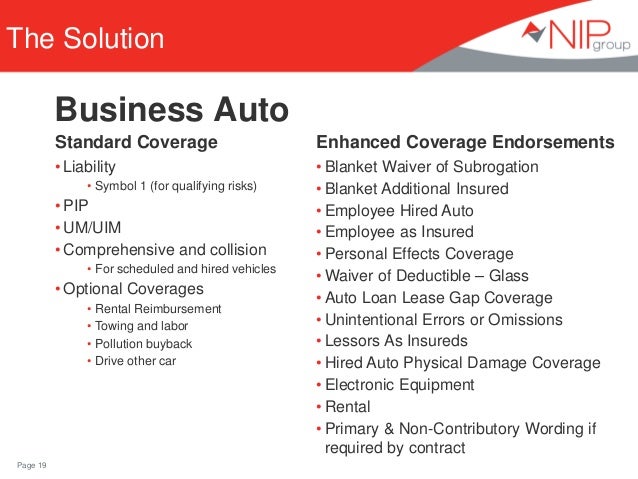고정 헤더 영역
상세 컨텐츠
본문

The Insurance world is a world of phrases like primary and noncontributory endorsements. Find out what this means, why it’s important and how myCOI can help you keep it all straight.As a compliance admin, it’s no secret that you have a lot to keep straight. The entire certificate tracking and collection process that you go through for every new vendor and subcontractor can be overwhelming and time consuming. And on top of that, the terms and language used in the world of insurance can be downright confusing—especially when all of the terms start to blur together.One such term that can be confusing (even to a seasoned commercial insurance agent) is “primary and noncontributory”. In this post, we’ll break down what this ubiquitous term means and we’ll help you understand why it matters as it pertains to insurance tracking and protecting your organization. Breaking Down Primary and Non-contributory EndorsementsLet’s start by breaking down the meaning of this confusing term. For starters, primary and noncontributory refers to policy wording as, “Commonly used in contract insurance requirements to stipulate the order in which multiple policies triggered by the same loss are to respond.
For example, a contractor may be required to provide liability insurance that is primary and noncontributory. This means that the contractor’s policy must pay before other applicable policies (primary) and without seeking contribution from other policies that also claim to be primary (noncontributory).” Why Are These Primary and Non-contributory Endorsements Important?If a policy exists that’s tied to the entity that is named as additional insured, an insurance company might ask the other insurance company (for example: your organization’s insurance company) to contribute to the loss if a claim is ever filed.
As a compliance admin, it’s critical to ensure that additional insured status includes both “primary and noncontributory” language in the contract so that your organization is financially protected in the event a loss occurs., according to IRMI, is usually an attempt to establish the order or priority of coverage and it is not concerned with allocating percentages of fault. On its own, the term “Noncontributory” generally means that an insurer has agreed not to seek its independent right to contribution when two or more insurers apply to the same accident for the same insured. The article goes on to state that in this context, noncontributory is most likely shorthand for the insurer giving up its right of contribution.Another reason that these terms are key to understand is that it’s possible that primary and noncontributory language is redundant when two ISO CGL policies with additional insured endorsements both apply to the same accident and same insured.
For example, if you are listed as an additional insured on my policy, then my policy is primary and your policy is excessive.It’s important to note that the intent of this phrase may seem similar to another common insurance term, “”. However, primary and noncontributory language seeks to protect the additional insured’s insurance policy from contributing toward the payment of a during the claim process; whereas the waiver of subrogation is intended to provide protection from having to reimburse all or some of the payout after the claim is handled.
Keeping It All StraightIt can be hard to keep all of the terms and phrases straight in the world of insurance, but taking one term at a time is the way to learn. When it comes to primary and noncontributory endorsements, one mistake or overlooked endorsement can mean trouble for your organization. Rather than stressing about keeping everything straight, consider a certificate of insurance tracking service to help you stay organized and on top of your game.exists for one reason: to help you handle the everyday tasks of managing certificates and protecting your company against underinsured claims, costly litigation and failed audits. The software is an easy-to-use, cloud-based solution developed and supported by a team of insurance professionals and is built on a foundation of insurance industry logic to automate the COI communication process and ensure you remain protected—even when you might not understand all of the terms in depth. Ready to Learn More About Primary and Non-Contributory?Interested in learning more about their insurance tracking services, or want to see myCOI in action? Request a product or sign up for our to stay in the know.
What's on this Page. Primary Coverage. Non-contributory Coverage. Equivalent Endorsements. CG 20 10 04 13: Additional Insured – Owners, Lessees or Contractors – Scheduled Person or Organization. CG 20 37 04 13: Additional Insured – Owners, Lessees Or Contractors – Completed Operations.
CG 20 12 04 13: Additional Insured – Governmental Agency - Permits Or Authorizations. CG 20 26 04 13: Additional Insured – Designated Person Or Organization. CG 20 11 04 13: Additional Insured – Managers Or Lessors Of Premises.Read next. Basic Concepts. An additional insured is a party that does not qualify as an insured under the standard GL.
Primary Non Contributory Endorsement Iso File Form
They must be added by an endorsement that changes the “who is an insured” section of the policy. Additional insured endorsements limit coverage to a specific relationship or set of circumstances. The additional insured endorsement for an agreement must match the relationship between the parties. Example: We gave Sonoma County Vintners, a not-for-profit association, a license agreement allowing them to use our parking lot for an event. Their insurance broker provided an endorsement granting additional insured status for liability arising out of food contributions made by us, or out of our client referrals to them.




